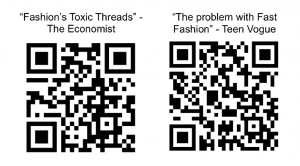Have you ever sat through a youtube video or an Instagram post of a Youtube vlogger or social media influencer unboxing a beauty product? All the suspense and frilly decorations that lure us to click checkout on Sephora or Zalora…but let’s look beyond the beautiful product within and what do you see? Unnecessary plastic waste in the form of plastic envelopes, bubble wrap, cellophane, polystyrene, plastic bottles…and the list goes on. Many of these items aren’t recyclable, and most of them will only end up in our oceans.
From the previous post, we know that annually, the beauty industry earns approximately $500 billion dollars (Rai, 2019). With this booming amount, we know that millions and billions of beauty products are being sold each year. These beauty products which include makeup, skincare, body care and more requires elaborate and flexible packaging. More often than not, the packaging material used is plastic. Our favourite beauty products, from shampoo to lipsticks, are poisoning the ocean.
The recent occurrences of disturbing images of ocean devastation and marine life suffering have driven many to adopt metal straws and reusable bags… but why are we not ‘greening’ our beauty industry?
Additionally, because of the growth potential of the beauty industry, brands now are increasingly competitive. Hence, they may look into making their packaging as ‘aesthetic’ and attractive as possible to attract potential customers. The beauty industry’s purpose is obviously making things (more specifically, us), prettier anyway – so what more its packaging?
Read more about the beauty industry’s efforts to mitigate this problem here.
References
Rai, V. (2019, December 28). Unseen 2019: The ugly side of beauty waste. Retrieved October 23, 2020, from https://www.livemint.com/mint-lounge/features/unseen-2019-the-ugly-side-of-beauty-waste-11577446070730.html
Robinson, M. (2019). Dead whale found with 40 kilograms of plastic bags in its stomach. [online] CNN. Available at: https://edition.cnn.com/2019/03/18/asia/dead-whale-philippines-40kg-plastic-stomach-intl-scli/index.html [Accessed 2 Nov. 2020].
Becatoros, E. (2017). More than 90 percent of world’s coral reefs will die by 2050. The Independent. [online] 13 Mar. Available at: https://www.independent.co.uk/environment/environment-90-percent-coral-reefs-die-2050-climate-change-bleaching-pollution-a7626911.html.
Diaz, T. (2019). Everything You Need To Know About Recycling Makeup. [online] www.refinery29.com. Available at: https://www.refinery29.com/en-us/how-to-recycle-old-makeup-containers [Accessed 2 Nov. 2020].
Smithers (n.d.). Smithers forecasts global flexible packaging market to $269 billion by 2024. [online] Smithers. Available at: https://www.smithers.com/resources/2019/jun/global-packaging-market-to-reach-$269-b-by-2024 [Accessed 2 Nov. 2020].
















 Source: (Boggon, 2019)
Source: (Boggon, 2019)




